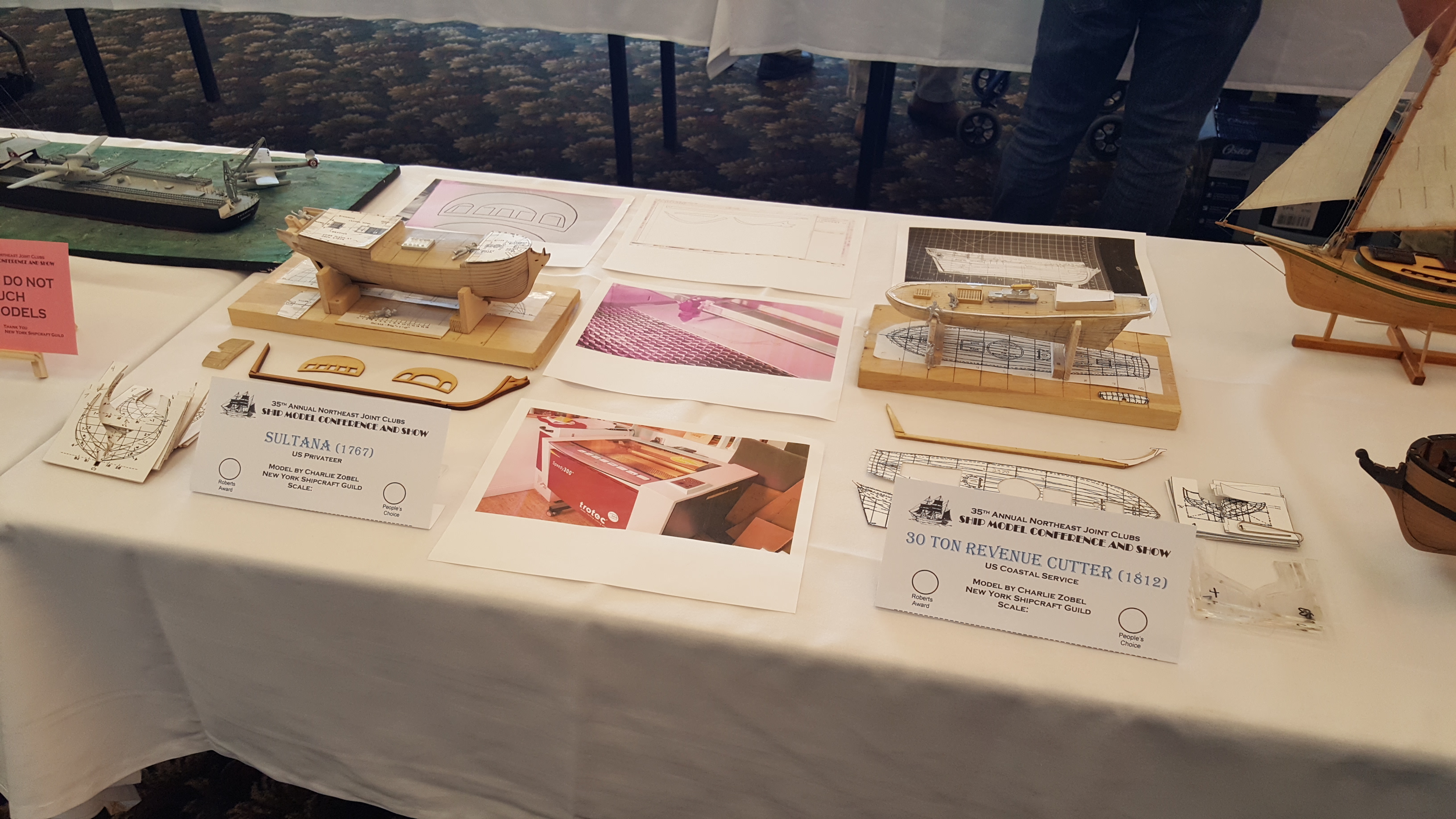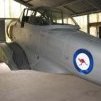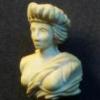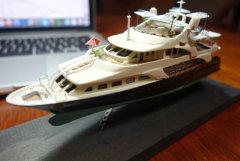MORE HANDBOOKS ARE ON THEIR WAY! We will let you know when they get here.
×
-
Posts
969 -
Joined
-
Last visited
Reputation Activity
-
 CharlieZardoz got a reaction from PeteB in 19th Century 31-ton Revenue Cutter by CharlieZardoz - Scale 1/64 - building as USRC Active based off Doughty plans and BlueJacket Shipcrafters kit
CharlieZardoz got a reaction from PeteB in 19th Century 31-ton Revenue Cutter by CharlieZardoz - Scale 1/64 - building as USRC Active based off Doughty plans and BlueJacket Shipcrafters kit
Hey guys! Well I did a bit more research to try and understand the nature of the planking of this type of ship and from what I see the model kits follow the graduated method. I spoke with Cathead regarding his Corel Ranger build and said the planks came in 3-4mm strips while Dallas has 5mm strips. But it's more than that he also said that the planks closest to the wales are thinner 3mm while the ones closer to the keel are 4mm. Look at the collage I posted of Dirk's gorgeous model and you can see how he laid out the planks (the scarfs were later covered by the wale) with thinner planks towards the deck. That said I feel that the krick model overdoes it with the thinness of planks they would probably be like 5" wide in real life. Look at the image of the cutter I posted and added 1/8" notches where planking would go. They seem a bit too big (these would be 8" planks in real life), so I think for this model having the average plank size of 7" (7/64") should be sufficient with the larger two models increasing to 1/8" (8" planks) and then 9/64" (9" planks) all having a few larger and smaller planks where needed. The decks will all be 9/64" no change there. That's the plan anyways well see what happens
So here is what I am going to do. I already have a stash of veneer cherry at 1/8" on hand which will be used for the widest planks in the center and towards the stern, then Ill order a bunch that are 7/64" in for the main planking and last a few at 3/32" for those closest to the deck curve. See Allan you are of course correct the answer is spilling. It's always spilling and in the future when I have a Byrnes table saw of my own I will no doubt work using that method but for now with these simple models I think having a couple of plank sizes and then curving/tapering the larger ones to fit is a stepping stone to spilling for me. I also plan on doing this for Sultana and this model(s) is already helping me understand how they will interrelate. It's having an inventory of plank sizes and using what is needed which in turn makes the idea of eventually milling my own very appealing! The idea of doing this on some major model like Confederacy seems like a distant dream at this point, I think I've developed a bit of planking phobia lol
-
 CharlieZardoz got a reaction from FriedClams in 19th Century 31-ton Revenue Cutter by CharlieZardoz - Scale 1/64 - building as USRC Active based off Doughty plans and BlueJacket Shipcrafters kit
CharlieZardoz got a reaction from FriedClams in 19th Century 31-ton Revenue Cutter by CharlieZardoz - Scale 1/64 - building as USRC Active based off Doughty plans and BlueJacket Shipcrafters kit
Greetings all! So on another note let's discuss planking and hopefully this doesn't come off confusing. As someone who's still a bit new at this I realize that different ships have different size plank width's etc. and that planks generally were 8-10" wide. So at 1/64th scale (3/16" =1') an 8" plank is 1/8" and a 10" plank is 5/32" For the most part kits of this scale seem to have material in this size range. Now looking at models of the Doughty revenue cutters that exist I see one of two things the krick and bluejacket kits seem to have deck planks that when converted to 1/64 scale measure to 9/64" (as does the Dallas plan all images in the center), while the Mamoli and Corel plans show deck planking at something closer to 1/8" (the images on the far left and right) which I am assuming the whole model is planked with the same. Now I kind of like the idea that the deck planks were wider than the hull planks but was that a common practice on ships or were the width of planking on deck always the same as the hull? Also the small 31 ton cutter that I built is no higher than 2" (see image) so the hull planks would have to me 1/8" max any bigger and that would not look right.
Now my main question is about the hull planking I could use 1/8" plank strips for the hull on all 3 models (and 9/64" for the decks on all 3 models). Or I could try a different approach and have them get gradually wider. The smallest ship 3/32" for hull planking the middle 1/8" the largest 5/32" Same with the decking but this sort of doesn't sound right to me. I assume if these ships were built around the same time in the same or similar docks they would have been using the same material on hand so I'd assume they'd all have the same width planks regardless of 31 ton or 80 ton.
So I am open to thoughts should I use 1/8" strips on all the hulls or vary them. 3/32" would give me more to work on with the smallest boat but that would make those planks 6" in real width and would the docks use planks that thin? Also is varying the deck and hull width appropriate? I know there isn't a 100% correct answer ship planks could be quite random, more like logically what is more likely. Of course I am about to order materials hence why I need to know what sizes to pick
-
 CharlieZardoz got a reaction from Archi in Planking stern
CharlieZardoz got a reaction from Archi in Planking stern
Horizontal. I'd suggest looking for cutter's and schooners in the build log there are plenty
-
 CharlieZardoz got a reaction from Canute in Planking stern
CharlieZardoz got a reaction from Canute in Planking stern
Look at other cutters on this site, like Chuck's Cheerful. They all have the stern planked so I would say yes.
-
 CharlieZardoz got a reaction from Tompslattery in Planking stern
CharlieZardoz got a reaction from Tompslattery in Planking stern
Horizontal. I'd suggest looking for cutter's and schooners in the build log there are plenty
-
 CharlieZardoz got a reaction from Canute in Planking stern
CharlieZardoz got a reaction from Canute in Planking stern
Horizontal. I'd suggest looking for cutter's and schooners in the build log there are plenty
-
 CharlieZardoz got a reaction from mtaylor in Planking stern
CharlieZardoz got a reaction from mtaylor in Planking stern
Look at other cutters on this site, like Chuck's Cheerful. They all have the stern planked so I would say yes.
-
 CharlieZardoz reacted to Chuck in HM Cutter Cheerful 1806 by Chuck - FINISHED - 1:48 scale - kit prototype
CharlieZardoz reacted to Chuck in HM Cutter Cheerful 1806 by Chuck - FINISHED - 1:48 scale - kit prototype
I absolutely agree and I thought the same thing. BUT....then I found these. All contemporary and from the same time period. I have dozens more with and without port lids. I guess we shall never know. I will add the rabbet......and have no lids. That is a safe bet I think.
Chuck
-
 CharlieZardoz reacted to Cabbie in HM Cutter Mermaid 1817 by Cabbie - Modellers Shipyard - Scale 1:48
CharlieZardoz reacted to Cabbie in HM Cutter Mermaid 1817 by Cabbie - Modellers Shipyard - Scale 1:48
Yee hah
A little modelling to update.
After separating all the pieces and doing a dry fit, only one bulkhead needed a shim to
bring it up to the right height, then I made a build board to hold and glued it all together.
But one thing that is going to be hard to handle is the planking timber.
The 1st planking is limewood, which I have never seen before, and is very
hard and 2.2mm thick. it is meant to 2mm.
The second planking is mahogany .35 to .4mms thick and meant to be .5.
Modellers shipyard told me that the 2nd planking was mahogany, before I Bought it, but their
picture advertised shows a browner timber. Which I like the look of better.
(PS no complaints from me about it)
Yes, I know that I am meant to be keeping this build simple, but
I am going to thin down the lime wood to 1.5mm thick, which will still be hard work to use.
Then I am going to cut my own 2nd planking from some Kauri that I have, of which
I like the color much better. it will be .8mm thick. That will allow me to cut wider planks for
spiling if need be.
The mahogany that is left I am going to put on the deck, and the rudder.
Anyway that is the plan, we will see what happens
Cheers Chris
-
 CharlieZardoz got a reaction from PeteB in 19th Century 31-ton Revenue Cutter by CharlieZardoz - Scale 1/64 - building as USRC Active based off Doughty plans and BlueJacket Shipcrafters kit
CharlieZardoz got a reaction from PeteB in 19th Century 31-ton Revenue Cutter by CharlieZardoz - Scale 1/64 - building as USRC Active based off Doughty plans and BlueJacket Shipcrafters kit
So according to Dan the style on that model isn't wrong per se but its a French/Dutch style whereas the English/American had all planks taper to meet the stem. Interesting stuff thanks for pointing it out.
-
 CharlieZardoz got a reaction from FriedClams in 19th Century 31-ton Revenue Cutter by CharlieZardoz - Scale 1/64 - building as USRC Active based off Doughty plans and BlueJacket Shipcrafters kit
CharlieZardoz got a reaction from FriedClams in 19th Century 31-ton Revenue Cutter by CharlieZardoz - Scale 1/64 - building as USRC Active based off Doughty plans and BlueJacket Shipcrafters kit
You may be right, let me look into it more and confirm
-
 CharlieZardoz got a reaction from Erik W in 19th Century 31-ton Revenue Cutter by CharlieZardoz - Scale 1/64 - building as USRC Active based off Doughty plans and BlueJacket Shipcrafters kit
CharlieZardoz got a reaction from Erik W in 19th Century 31-ton Revenue Cutter by CharlieZardoz - Scale 1/64 - building as USRC Active based off Doughty plans and BlueJacket Shipcrafters kit
Hey guys! Well I did a bit more research to try and understand the nature of the planking of this type of ship and from what I see the model kits follow the graduated method. I spoke with Cathead regarding his Corel Ranger build and said the planks came in 3-4mm strips while Dallas has 5mm strips. But it's more than that he also said that the planks closest to the wales are thinner 3mm while the ones closer to the keel are 4mm. Look at the collage I posted of Dirk's gorgeous model and you can see how he laid out the planks (the scarfs were later covered by the wale) with thinner planks towards the deck. That said I feel that the krick model overdoes it with the thinness of planks they would probably be like 5" wide in real life. Look at the image of the cutter I posted and added 1/8" notches where planking would go. They seem a bit too big (these would be 8" planks in real life), so I think for this model having the average plank size of 7" (7/64") should be sufficient with the larger two models increasing to 1/8" (8" planks) and then 9/64" (9" planks) all having a few larger and smaller planks where needed. The decks will all be 9/64" no change there. That's the plan anyways well see what happens
So here is what I am going to do. I already have a stash of veneer cherry at 1/8" on hand which will be used for the widest planks in the center and towards the stern, then Ill order a bunch that are 7/64" in for the main planking and last a few at 3/32" for those closest to the deck curve. See Allan you are of course correct the answer is spilling. It's always spilling and in the future when I have a Byrnes table saw of my own I will no doubt work using that method but for now with these simple models I think having a couple of plank sizes and then curving/tapering the larger ones to fit is a stepping stone to spilling for me. I also plan on doing this for Sultana and this model(s) is already helping me understand how they will interrelate. It's having an inventory of plank sizes and using what is needed which in turn makes the idea of eventually milling my own very appealing! The idea of doing this on some major model like Confederacy seems like a distant dream at this point, I think I've developed a bit of planking phobia lol
-
 CharlieZardoz got a reaction from archjofo in 19th Century 31-ton Revenue Cutter by CharlieZardoz - Scale 1/64 - building as USRC Active based off Doughty plans and BlueJacket Shipcrafters kit
CharlieZardoz got a reaction from archjofo in 19th Century 31-ton Revenue Cutter by CharlieZardoz - Scale 1/64 - building as USRC Active based off Doughty plans and BlueJacket Shipcrafters kit
Hey guys! Well I did a bit more research to try and understand the nature of the planking of this type of ship and from what I see the model kits follow the graduated method. I spoke with Cathead regarding his Corel Ranger build and said the planks came in 3-4mm strips while Dallas has 5mm strips. But it's more than that he also said that the planks closest to the wales are thinner 3mm while the ones closer to the keel are 4mm. Look at the collage I posted of Dirk's gorgeous model and you can see how he laid out the planks (the scarfs were later covered by the wale) with thinner planks towards the deck. That said I feel that the krick model overdoes it with the thinness of planks they would probably be like 5" wide in real life. Look at the image of the cutter I posted and added 1/8" notches where planking would go. They seem a bit too big (these would be 8" planks in real life), so I think for this model having the average plank size of 7" (7/64") should be sufficient with the larger two models increasing to 1/8" (8" planks) and then 9/64" (9" planks) all having a few larger and smaller planks where needed. The decks will all be 9/64" no change there. That's the plan anyways well see what happens
So here is what I am going to do. I already have a stash of veneer cherry at 1/8" on hand which will be used for the widest planks in the center and towards the stern, then Ill order a bunch that are 7/64" in for the main planking and last a few at 3/32" for those closest to the deck curve. See Allan you are of course correct the answer is spilling. It's always spilling and in the future when I have a Byrnes table saw of my own I will no doubt work using that method but for now with these simple models I think having a couple of plank sizes and then curving/tapering the larger ones to fit is a stepping stone to spilling for me. I also plan on doing this for Sultana and this model(s) is already helping me understand how they will interrelate. It's having an inventory of plank sizes and using what is needed which in turn makes the idea of eventually milling my own very appealing! The idea of doing this on some major model like Confederacy seems like a distant dream at this point, I think I've developed a bit of planking phobia lol
-
 CharlieZardoz reacted to allanyed in 19th Century 31-ton Revenue Cutter by CharlieZardoz - Scale 1/64 - building as USRC Active based off Doughty plans and BlueJacket Shipcrafters kit
CharlieZardoz reacted to allanyed in 19th Century 31-ton Revenue Cutter by CharlieZardoz - Scale 1/64 - building as USRC Active based off Doughty plans and BlueJacket Shipcrafters kit
Charlie,
I know this subject comes up continually here, but if you study David Antscherls tutorial here at MSW on planking, and look at the fine finish on the planking that is achieved, you may wind up buying sheets and cutting the planks from the sheet stock. It is sure a lot easier than forcing straight planks of a single size into position by edge setting, (based on my own experience.) You can see from a planking expansion drawing that straight strips are not really used. A picture of the planking expansion for the HMS Squirrel follows and the schooner Ernestina planking expansion is attached as a TIFF file. The Ernestina drawing can be downloaded from the Library of Congress for free in several different formats and are extremely clear to show the plank shapes for that particular hull. I realize some planks can be tapered and then easily forced into position without too much trouble with edge setting, but depending on the hull shape and the hardness of the wood you are using, a lot of them want to buckle.
Allan
Planking expansion port side.tiff
-
 CharlieZardoz reacted to dgbot in 19th Century 31-ton Revenue Cutter by CharlieZardoz - Scale 1/64 - building as USRC Active based off Doughty plans and BlueJacket Shipcrafters kit
CharlieZardoz reacted to dgbot in 19th Century 31-ton Revenue Cutter by CharlieZardoz - Scale 1/64 - building as USRC Active based off Doughty plans and BlueJacket Shipcrafters kit
I think I would go with 1/8 " It is easier to find this size and why complicate things when you do not have to.
David B
-
 CharlieZardoz got a reaction from mtaylor in 19th Century 31-ton Revenue Cutter by CharlieZardoz - Scale 1/64 - building as USRC Active based off Doughty plans and BlueJacket Shipcrafters kit
CharlieZardoz got a reaction from mtaylor in 19th Century 31-ton Revenue Cutter by CharlieZardoz - Scale 1/64 - building as USRC Active based off Doughty plans and BlueJacket Shipcrafters kit
Greetings all! So on another note let's discuss planking and hopefully this doesn't come off confusing. As someone who's still a bit new at this I realize that different ships have different size plank width's etc. and that planks generally were 8-10" wide. So at 1/64th scale (3/16" =1') an 8" plank is 1/8" and a 10" plank is 5/32" For the most part kits of this scale seem to have material in this size range. Now looking at models of the Doughty revenue cutters that exist I see one of two things the krick and bluejacket kits seem to have deck planks that when converted to 1/64 scale measure to 9/64" (as does the Dallas plan all images in the center), while the Mamoli and Corel plans show deck planking at something closer to 1/8" (the images on the far left and right) which I am assuming the whole model is planked with the same. Now I kind of like the idea that the deck planks were wider than the hull planks but was that a common practice on ships or were the width of planking on deck always the same as the hull? Also the small 31 ton cutter that I built is no higher than 2" (see image) so the hull planks would have to me 1/8" max any bigger and that would not look right.
Now my main question is about the hull planking I could use 1/8" plank strips for the hull on all 3 models (and 9/64" for the decks on all 3 models). Or I could try a different approach and have them get gradually wider. The smallest ship 3/32" for hull planking the middle 1/8" the largest 5/32" Same with the decking but this sort of doesn't sound right to me. I assume if these ships were built around the same time in the same or similar docks they would have been using the same material on hand so I'd assume they'd all have the same width planks regardless of 31 ton or 80 ton.
So I am open to thoughts should I use 1/8" strips on all the hulls or vary them. 3/32" would give me more to work on with the smallest boat but that would make those planks 6" in real width and would the docks use planks that thin? Also is varying the deck and hull width appropriate? I know there isn't a 100% correct answer ship planks could be quite random, more like logically what is more likely. Of course I am about to order materials hence why I need to know what sizes to pick
-
 CharlieZardoz reacted to trippwj in 19th Century 31-ton Revenue Cutter by CharlieZardoz - Scale 1/64 - building as USRC Active based off Doughty plans and BlueJacket Shipcrafters kit
CharlieZardoz reacted to trippwj in 19th Century 31-ton Revenue Cutter by CharlieZardoz - Scale 1/64 - building as USRC Active based off Doughty plans and BlueJacket Shipcrafters kit
I suspect the green inner bulwarks was not done with these beasties. The Revenue Marine (which preceded the Navy by a few years) was a much more subdued branch - their duties, specifically assigned to the cutters and their crews as legislated by Congress and expounded by Hamilton included:
Boarding incoming and outgoing vessels and checking their papers (ownership, registration, admeasurement, manifests, etc.);
Ensuring that all cargoes were properly documented;
Sealing the cargo holds of incoming vessels;
Seizing those vessels in violation of the law.
They were also tasked with a number of other duties that were not related to protecting the revenue. These included:
Enforcing quarantine restrictions established by the federal, state or local governments;
Charting the local coastline;
Enforcing the neutrality and embargo acts;
Carrying official (and unofficial) passengers;
Carrying supplies to lighthouse stations;
Other duties as assigned by the collector.
Their primary purpose, however, was to protect the revenue of the United States by deterring smuggling.
The funding for these cutters was tiny - around $1,000 each for the original 10 cutters; while there is sparse detail, without digging into legislative records, that is, the available information indicates that in the 1816-1825 period when these were built, the cost was less than $3,000 each (actually, the Active (1816) shows a cost of $1,390, while the bill for the Detector and Search totaled $12,500.) The mission post- Second War with Britain expanded to include anti piracy, but retained the former anit-smuggling and revenue protection missions. They were still extremely active in the anti-smuggling role during this period. The area where I live, Moose Island and Eastport, was the last US Territory occupied by the British following the war and was not returned to the US until 1818 (Statehood followed in 1820). Smuggling was a way of life before the war, and following the departure of those pesky British it resumed once more. There are many tales from this region of the hatred felt toward the Cutter Detector by those in the Machias Bay area. The office of Collector of Customs in Eastport was a rather Dangerous position. Unfortunately, most of the older records from the Customs House were either captured by the British in 1814 or burnt in one of the 2 great fires of the late 19th century.
My point, though, is that the overall cost was low to build and equip these vessels - they would not waste much money on expensive paint schemes. Basing the color of a cutter on Naval paint schemes is, for this period, probably not accurate. The cutter role required stealth - they needed to remain nearly invisible to the smuggler to intercept them at night. Often they would lay-up in small coves or bays to wait for the smuggler. The anit-piracy role required similar actions, hence an incentive for more subdued colors. As to the green inner bulwark, another probably not. Even the Constitution historians (including experts such as Tyrone Martin) debate how accurate the green is for the early 19th century.
I think you would be fairly accurate to go with tarred or black for the outer hull above the waterline, probably coppered below. Perhaps a narrow white or yellow ochre stripe along the hull, inner bulwarks either natural or whitewashed. Not much decoration, very utilitarian to match the role.
-
 CharlieZardoz reacted to rafine in Granado by rafine - FINISHED - Caldercraft - 1:64
CharlieZardoz reacted to rafine in Granado by rafine - FINISHED - Caldercraft - 1:64
Rigging for the bowsprit consists of the gammoning, bobstays and shrouds. They are now complete. As previously indicated, the deadeyes are from the kit and the line is from Syren. The hooks attaching the shrouds to eyebolts in the hull are the lack plastic ones from Syren. Line sizes are from the table in AOTS. In cases where the the size falls between the Syren sizes, I round up or down to the nearest size, but tend to go smaller in cases of doubt, rather than larger, because I prefer a lighter look to the rigging.
Work is now underway on the lower masts.
Bob
-
 CharlieZardoz got a reaction from tkay11 in 19th Century 31-ton Revenue Cutter by CharlieZardoz - Scale 1/64 - building as USRC Active based off Doughty plans and BlueJacket Shipcrafters kit
CharlieZardoz got a reaction from tkay11 in 19th Century 31-ton Revenue Cutter by CharlieZardoz - Scale 1/64 - building as USRC Active based off Doughty plans and BlueJacket Shipcrafters kit
So now for confession time. I saw a deal on ebay for the old Dallas kit for $50 so picked it up. The kit is 1/48 scale so the parts won't be used however she is modeled after the 80 ton cutter so decided to convert the kit to 1/64 in a similar manner to how I converted the 50 ton kit. This model will be done last but I started some of the process so you can see how it's assisting me in the other two. The use of this kit helps me in understanding the changes between each cutter how the shape changes/gets bigger yet planking seems to have stayed the same (width of planks), and other parts helping me understand camber, etc. for the other 2 models. I just needed to see all 3 in perspective as they are sort of connected and don't fully trust myself as a scratch kit builder just yet. It also means that each cutter is going to be built in 3 different ways, block of wood, bread and butter slices and plank on bulkhead! Learning a lot with these 3 and will apply that to Sultana when I get back to her.
-
 CharlieZardoz got a reaction from FriedClams in 19th Century 31-ton Revenue Cutter by CharlieZardoz - Scale 1/64 - building as USRC Active based off Doughty plans and BlueJacket Shipcrafters kit
CharlieZardoz got a reaction from FriedClams in 19th Century 31-ton Revenue Cutter by CharlieZardoz - Scale 1/64 - building as USRC Active based off Doughty plans and BlueJacket Shipcrafters kit
Thank you for that interesting bit of history Wayne. See I agree the inner bulwarks were probably not green like a military vessel, maybe white which Ive seen in alot of cutter models but Dave has a different opinion and also doesnt feel ochre or yellow was used as it was British but its interesting I respect his thoughts as well. The green on that one image i did could be excessive maybe just a strip or two but it looks like we are narrowing down the options quite nicely. I am curious about that white between the waterline and wale, the Chapelle image suggests this so does Corel's Ranger however maybe it should be all black, the reasoning for color in that section is due to that model of Alabama which was all green but I'd like the coloring broken up a bit.
-
 CharlieZardoz got a reaction from Omega1234 in 19th Century 31-ton Revenue Cutter by CharlieZardoz - Scale 1/64 - building as USRC Active based off Doughty plans and BlueJacket Shipcrafters kit
CharlieZardoz got a reaction from Omega1234 in 19th Century 31-ton Revenue Cutter by CharlieZardoz - Scale 1/64 - building as USRC Active based off Doughty plans and BlueJacket Shipcrafters kit
Thank you for that interesting bit of history Wayne. See I agree the inner bulwarks were probably not green like a military vessel, maybe white which Ive seen in alot of cutter models but Dave has a different opinion and also doesnt feel ochre or yellow was used as it was British but its interesting I respect his thoughts as well. The green on that one image i did could be excessive maybe just a strip or two but it looks like we are narrowing down the options quite nicely. I am curious about that white between the waterline and wale, the Chapelle image suggests this so does Corel's Ranger however maybe it should be all black, the reasoning for color in that section is due to that model of Alabama which was all green but I'd like the coloring broken up a bit.
-
 CharlieZardoz got a reaction from Cathead in 19th Century 31-ton Revenue Cutter by CharlieZardoz - Scale 1/64 - building as USRC Active based off Doughty plans and BlueJacket Shipcrafters kit
CharlieZardoz got a reaction from Cathead in 19th Century 31-ton Revenue Cutter by CharlieZardoz - Scale 1/64 - building as USRC Active based off Doughty plans and BlueJacket Shipcrafters kit
Thank you for that interesting bit of history Wayne. See I agree the inner bulwarks were probably not green like a military vessel, maybe white which Ive seen in alot of cutter models but Dave has a different opinion and also doesnt feel ochre or yellow was used as it was British but its interesting I respect his thoughts as well. The green on that one image i did could be excessive maybe just a strip or two but it looks like we are narrowing down the options quite nicely. I am curious about that white between the waterline and wale, the Chapelle image suggests this so does Corel's Ranger however maybe it should be all black, the reasoning for color in that section is due to that model of Alabama which was all green but I'd like the coloring broken up a bit.
-
 CharlieZardoz got a reaction from archjofo in 19th Century 31-ton Revenue Cutter by CharlieZardoz - Scale 1/64 - building as USRC Active based off Doughty plans and BlueJacket Shipcrafters kit
CharlieZardoz got a reaction from archjofo in 19th Century 31-ton Revenue Cutter by CharlieZardoz - Scale 1/64 - building as USRC Active based off Doughty plans and BlueJacket Shipcrafters kit
So I returned from the lab with a bag o parts! And while much of it was for Sultana I did the two keels and some of the acrylic templates (ran out of material darn it)
Note the pic with the two keels alongside each other ain't that just fascinating how there is a slightly straighter "sheer" on the 51 ton ship.
-
 CharlieZardoz got a reaction from mtaylor in 19th Century 31-ton Revenue Cutter by CharlieZardoz - Scale 1/64 - building as USRC Active based off Doughty plans and BlueJacket Shipcrafters kit
CharlieZardoz got a reaction from mtaylor in 19th Century 31-ton Revenue Cutter by CharlieZardoz - Scale 1/64 - building as USRC Active based off Doughty plans and BlueJacket Shipcrafters kit
Thank you for that interesting bit of history Wayne. See I agree the inner bulwarks were probably not green like a military vessel, maybe white which Ive seen in alot of cutter models but Dave has a different opinion and also doesnt feel ochre or yellow was used as it was British but its interesting I respect his thoughts as well. The green on that one image i did could be excessive maybe just a strip or two but it looks like we are narrowing down the options quite nicely. I am curious about that white between the waterline and wale, the Chapelle image suggests this so does Corel's Ranger however maybe it should be all black, the reasoning for color in that section is due to that model of Alabama which was all green but I'd like the coloring broken up a bit.
-
 CharlieZardoz got a reaction from shipmodel in 19th Century 31-ton Revenue Cutter by CharlieZardoz - Scale 1/64 - building as USRC Active based off Doughty plans and BlueJacket Shipcrafters kit
CharlieZardoz got a reaction from shipmodel in 19th Century 31-ton Revenue Cutter by CharlieZardoz - Scale 1/64 - building as USRC Active based off Doughty plans and BlueJacket Shipcrafters kit
Very interesting stuff guys thank you. I do have the NRG arcticle as well as the Ship Model Shop Notes II which both discuss the color schemes of period ships. Thing is I want to make a point that color scheme's from 1812-15 are a bit different than 1815-1825 and then 1825 onward (basically all black and white). The period right after the war is a weird time since it was the beginning of the standardization of colors to the 2 tone but wasn't quite there yet, ships that survived the war entered dock for refits so that by 1825 the navy was pretty much standard. Anywhoo I spoke more with Dave from Lumbreyard and we had a discussion again about what was most likely the color patterns on these types of ships. So I've modified my color patterns a bit what I am seeing is that the inside bulwarks were probably green, the outside black with either a white or green striping maybe red as well. Dave mentions Mahogany (reddish color) could have been used for trim work and that the cap railings might have been in bright natural wood so with that in mind, here are some layouts of what I'm thinking I may wind up doing based on new information. Feedback is most welcomed











